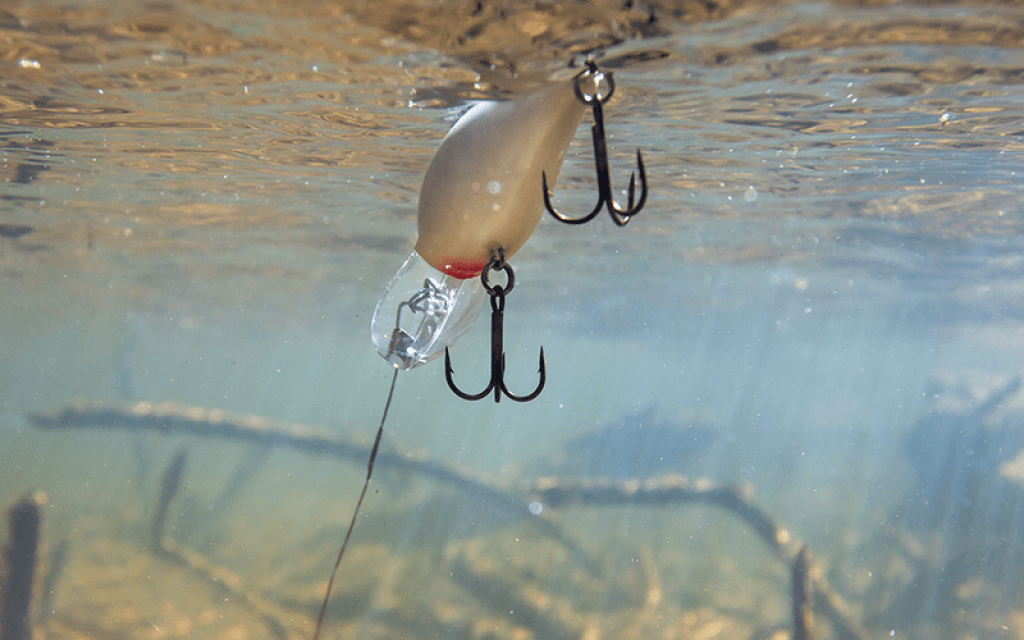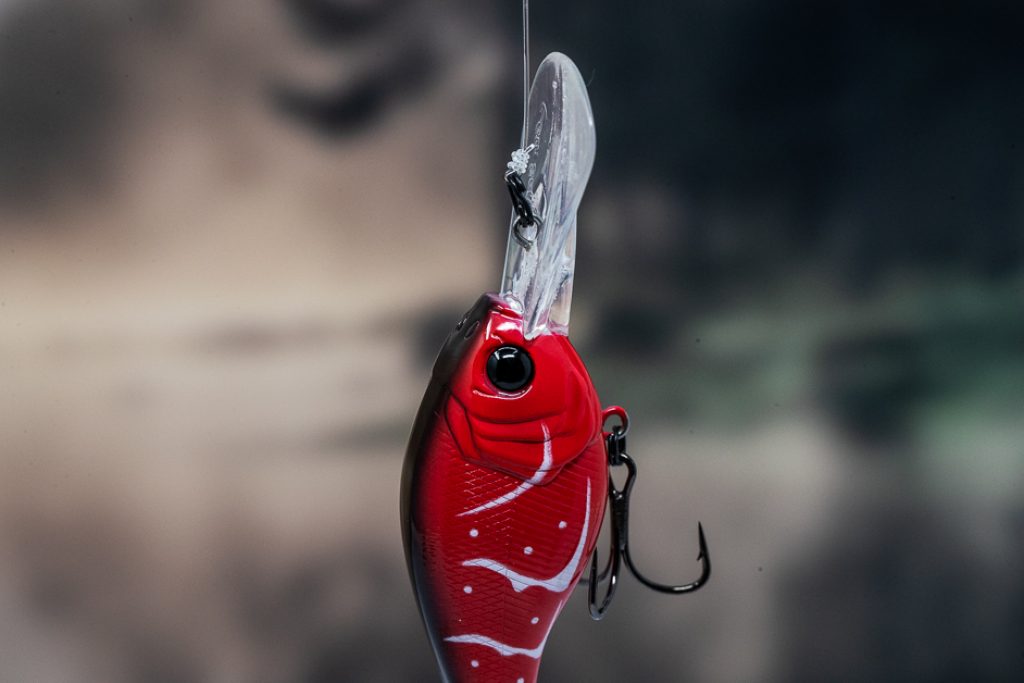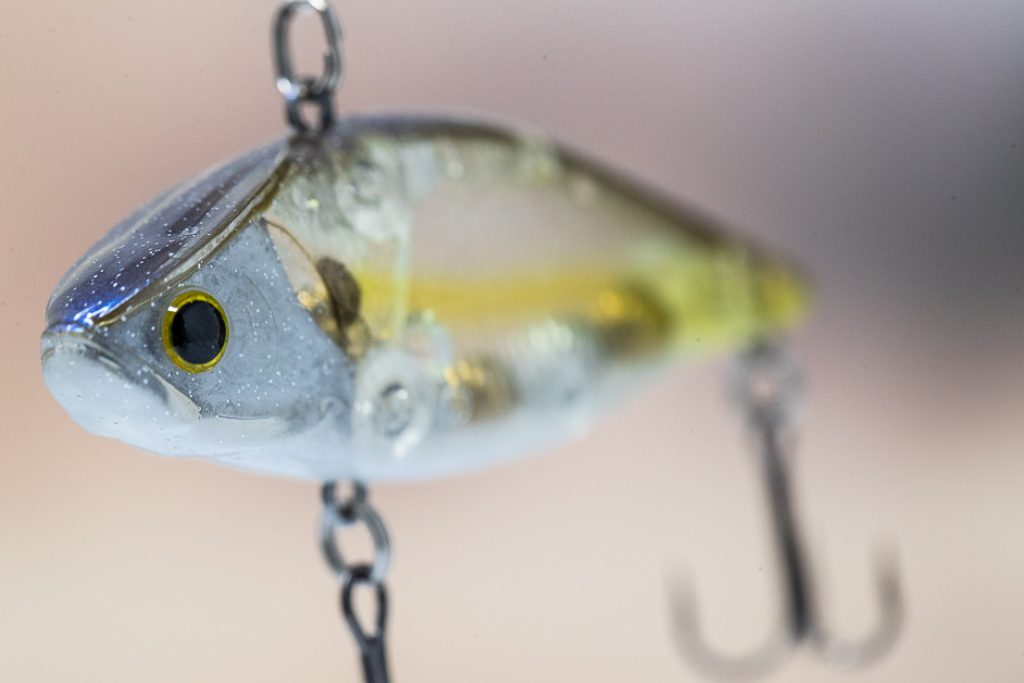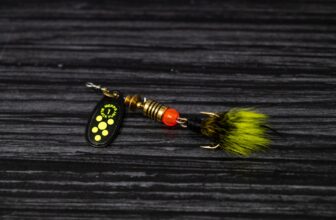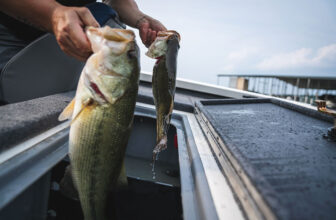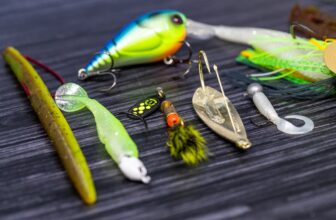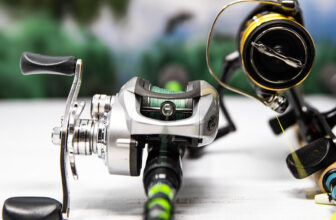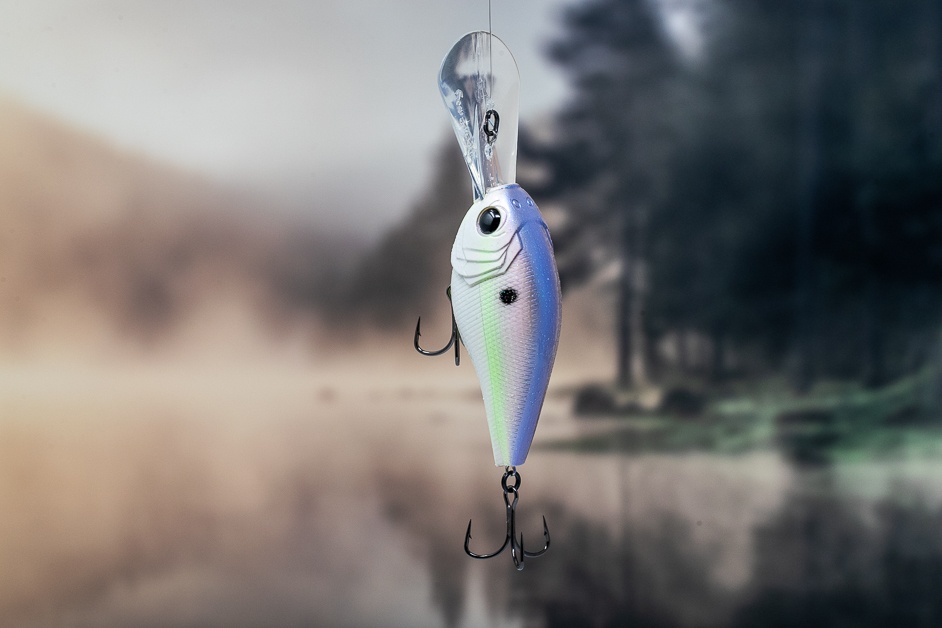
When the water temperature starts to drop in the early fall as the air cools and the leaves begin to lose their lush green color, crankbaits are often the best choice you can use when it comes to bass fishing. There are a number of reasons why fall crankbait fishing is a great option once the temperatures start to drop!
Throughout the summer, bass have been devouring nearly everything they can find as the insects and other types of prey are plentiful. However, once the weather begins to cool down across much of the United States, bass will turn their attention toward different types of smaller bait fish to satisfy their need for food.
In this article, we’ll explain the reasons why bass are more likely to bite a crankbait in the fall than just about any other type of lure. We’ll also cover some of the best tactics and tips related to fall crankbait fishing as well.
Fall Crankbait Fishing for Bass
Like most other types of animals, bass are known to start feeding more heavily during the early and mid-fall season in order to beef up before a long, cold winter. In some cases, the fall bass bite can be just as action-packed as the spring pre-spawn feeding as fish will typically work to hunt and chase down certain types of lures and rigs that they might have been avoiding during the hot summer months.
There are plenty of advantages related to fishing during the mild weather of autumn. For starters, the weather is much cooler and you don’t have to be subjected to the sweltering heat that can often be punishing in the southern portion of North America. The more the water temperature drops, the more active fish will become as they are also feeling more comfortable.
Some anglers might be surprised to learn that bass are very much like humans when it comes to weather patterns and climate. If it’s overly hot, they tend to retreat into the shadows and depths where it’s a bit cooler. During the harsh, cold winters, bass will usually hunker down in deeper water and be much more lethargic than usual. In the fall and spring, it’s common for bass to have a distinct burst of energy and activity that’s typically tied to the more mild weather that makes humans want to get out and be more active.
When the water temperature cools down, bass will come back out of the depths and venture into shallow areas where they will look for a variety of bait fish and other creatures. There are a few key aspects to fishing for fall bass that you’ll need to adhere to in order to be successful.
Focus on Depth Changes
During the fall, bass are going to move up into the shallow waters of any lake, pond or even river systems. In the early morning and late evenings, you can usually pound the edges of any waterway and get a few strikes from hungry bass that are prowling the shoreline looking for food. However, your best strategy during the fall will be to focus on areas where the water depth changes drastically.
Creek channels, ledges, knolls, and other types of changes along the bottom are places that bass will use to hide themselves and ambush unsuspecting bait fish that might venture too far away from the shore. Anywhere a creek or river empties into a lake or reservoir is a great place for fall bass fishing as there is almost guaranteed to be the types of depth changes you want to look for. Moving water will usually cut and carve away certain parts of the bottom and create ideal places for bass to stage near ledges and drop-offs where they can hide from their prey.
Crankbaits are an excellent choice around these areas because bass will usually be looking for lone minnows or other types of bait fish that turn out to be an easy meal. Smaller fish will usually hang out near the mouths of creeks and rivers because they can find tiny particles to eat flowing in with the water that’s entering the lake.
One of the absolute best areas to fish during the fall is sections of the lake or reservoir where there are depth changes, as well as structure such as timber, brush piles, rocks or other things that bass can use for cover. These areas are outstanding when it comes to providing places for bass to hide out and ambush their prey.
Angle of Lure Presentation
Sometimes during the fall, a bass might be more interested in a lure simply based on the angle and path that it’s traveling. This varies from place to place and it’s sometimes hard to figure out just where you need to cast your crankbait to give it as much of a realistic presentation as possible.
When fishing around depth changes or structure, you’ll want to thoroughly cover the location with your casts. Most professional anglers will cast out in a very wide swath of an area when using crankbaits because bass might bite a lure that’s moving in one specific direction and totally ignore one that’s moving in an opposite direction.
Bait Fish vs Crawfish
One of the best kept secrets among professional anglers who have great success fishing crankbaits during the fall is using lures that look more like crawfish than small bait fish. Most of the top lure manufacturers will produce different types of crankbaits that have a deep red or orange coloring. These crankbaits obviously don’t resemble any type of bait fish that are usually found in freshwater lakes and rivers across the United States, but they do very closely mimic the look of a crawfish.
By fishing a red or orange crankbait very close to a structure located near creeks and rivers that empty into a lake you can pick up strikes from bass that are specifically looking for crawfish during the fall. These small, lobster-like creatures are a favorite type of meal among smallmouth and largemouth bass that provide them with plenty of nutrients.
If you’re looking for a good crankbait to use that will mimic crawfish, search for one that gives off more of a wobbling motion underwater instead of a very tight wobble. A crankbait that has a wider wobbling motion looks more like a crawfish swimming through the water than a bait fish and the reddish brown or black coloring helps to closely resemble the crawfish’s natural color.
In addition to a lure that has a good wobble, you might want to try fishing a squarebill crankbait or one that’s a medium or deep diving version in shallow water. Some anglers mistakenly think that it’s bad to allow your crankbait to dig into the bottom of the lake, but using a deep diving crank that digs into the bottom and kicks up a good amount of debris actually looks very similar to a crawfish escaping from a predator. If a bass sees a red-colored, wobbling lure moving along the bottom of the lake during the fall, they will immediately recognize it as a crawfish and move in to devour it.
Variation of Retrieval Methods
During the fall, you can get much more creative with the way in which you retrieve your crankbaits compared to the rest of the year. Sometimes, bass will strike a crankbait that’s steadily moving along in a particular section of the water column, but other times, you might want to use certain tactics to draw bites from wary bass.
By reeling your crankbait and applying an upward pull before letting it fall back down, you can cover a wider section of the water column and get the attention of bass that are higher or lower in depth. Lipless crankbaits are an excellent choice for this method because you can lift them up and allow them to fall much easier than you can with a typical crankbait.
Crankbaits that Mimic Shad
Perhaps the most sought-after type of prey bass want to eat during the fall is shad. These small bait fish can vary in size and shape from lake to lake, but if you pick out the right one in terms of color and diving depth, you can target bass that are hunting schools of shad during the fall. Bass will often swim close to a large school of shad and try to identify and pick off stragglers that get away from the main group.
By using fish finders equipped to pick up schools of shad, you can identify areas where bass are hunting shad and set up to cast your crankbait so that it will run very close to these schools and result in strikes. You can use a stop-and-go type of retrieval when fishing in this manner as bass also like to go after what looks like a wounded shad that’s struggling to swim through the water and get back to the safety of the school.
Conclusion
Fall bass fishing with crankbaits can be one of the most exciting times of the year. However, it’s important to remember that you might sometimes need to be patient and try out different color combinations and types of crankbaits in certain areas before abandoning the idea of crankbait fishing for a different lure. If you do enough research and understand what type of bait fish are most prevalent in the lake you plan to fish, you can select a crankbait that will deliver the look and motion that is congruent with that fish to fool bass into biting.

